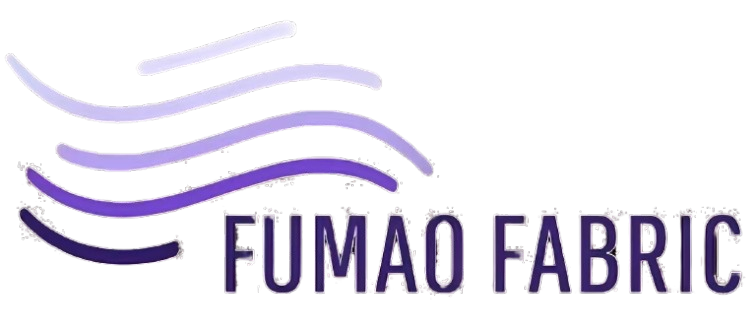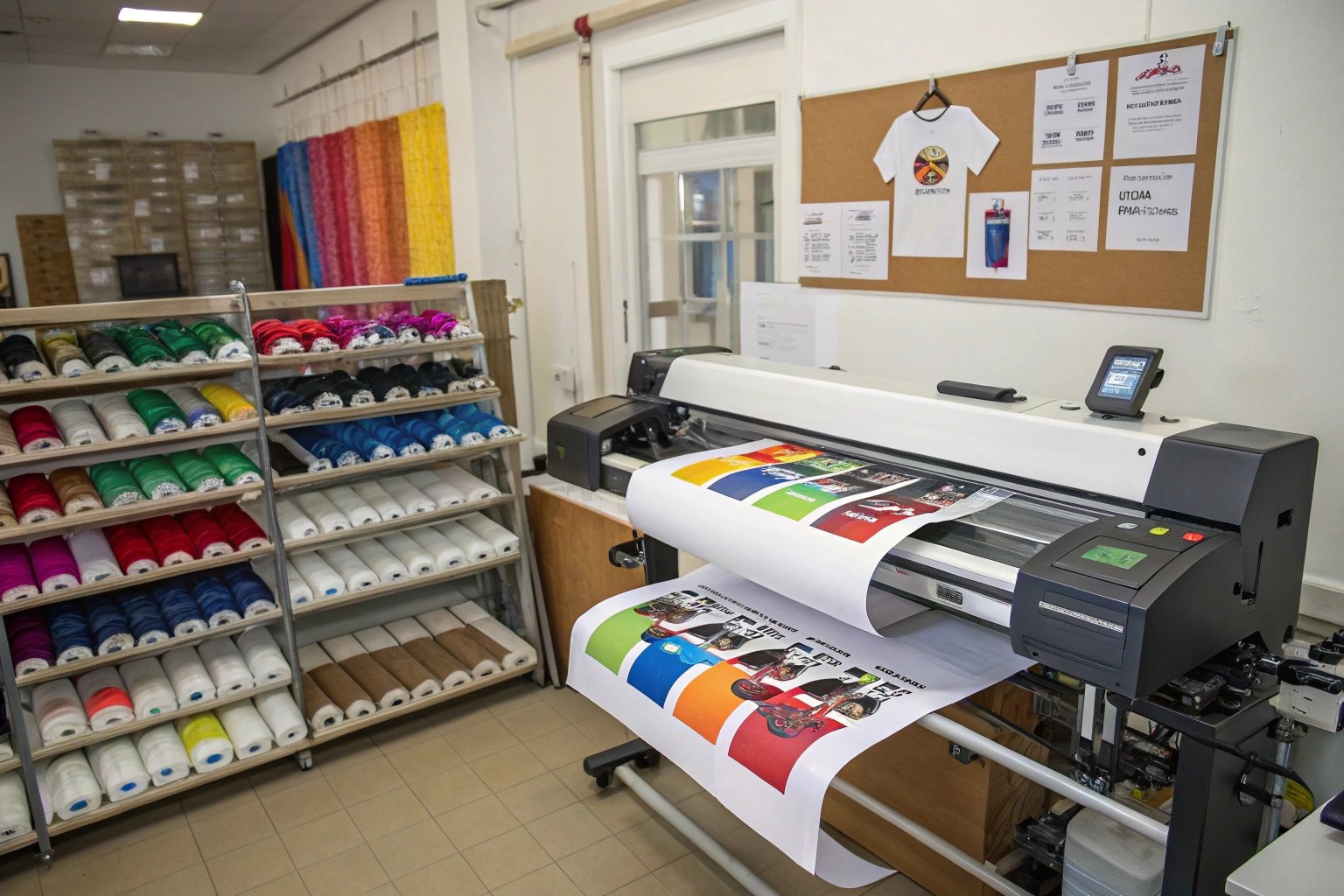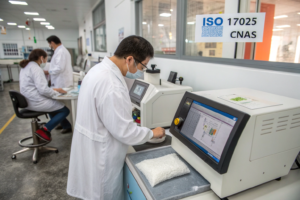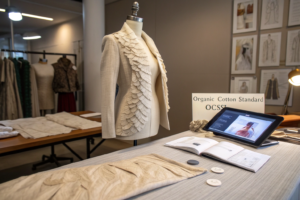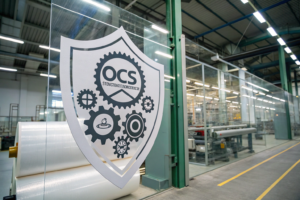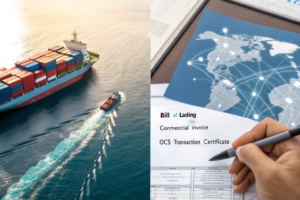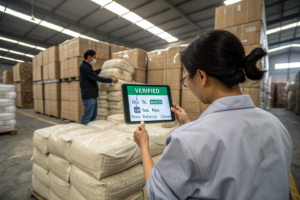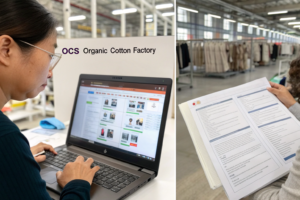Sublimation printing is the go-to method for vibrant, long-lasting graphics on performance wear. But finding the right supplier for custom sublimation printed fabric—especially with technical features like 4-way stretch or moisture wicking—can be confusing.
To source custom sublimation printed performance fabric, you need to partner with suppliers offering high-polyester content fabrics, in-house heat transfer printing, color calibration, lab-tested durability, and low-MOQ support for athletic or fashion markets.
At Fumao Fabric, we help global buyers—from athleisure startups to pro cycling brands—achieve vibrant custom prints on technically functional fabric bases. Here’s your sourcing guide from fiber to finished roll.
What Fabric Base Is Best for Sublimation Printing?
Sublimation printing chemically bonds ink into polyester fibers, meaning the fabric itself must be predominantly synthetic.
The ideal base fabric for sublimation is 85–100% polyester—often blended with spandex for stretch—and finished with a smooth, white surface that accepts heat transfer dyes.
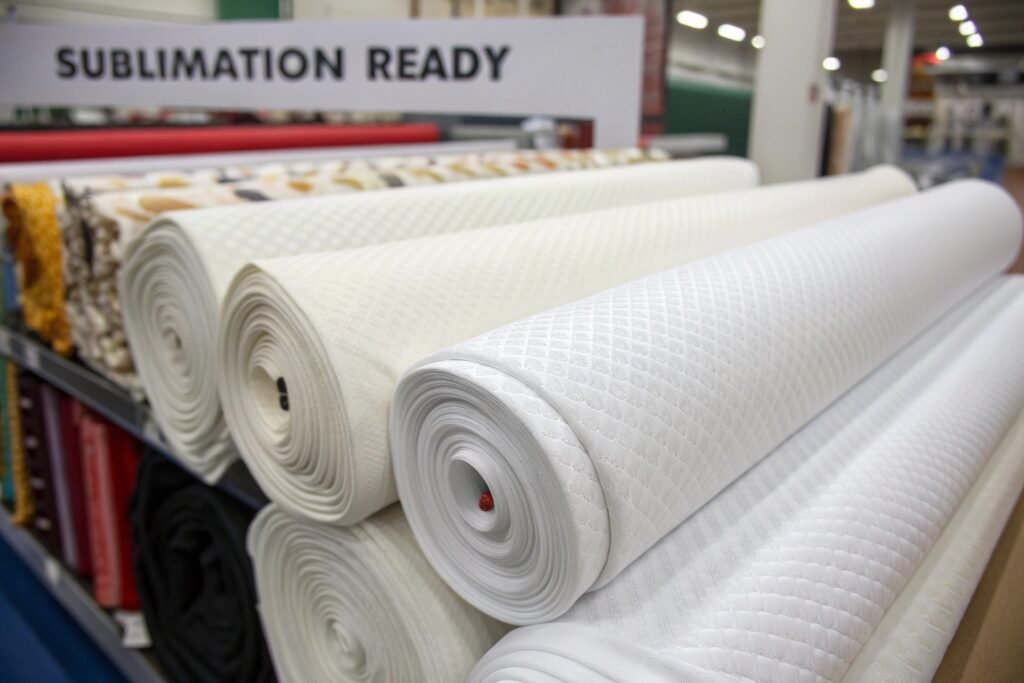
Why Does Sublimation Require High Polyester Content?
Sublimation ink doesn’t sit on top of fabric like pigment or reactive dye—it penetrates and bonds with polyester molecules under heat and pressure. Cotton or rayon simply won’t bond, resulting in faded or washed-out prints.
According to Epson Dye-Sub Technology Guide, fabric should contain at least 85% polyester for strong, colorfast results.
What Fabric Constructions Work Best?
Popular options include:
- Interlock knits – smooth face, great for tees and tanks
- Bird’s eye mesh – breathable, used in teamwear
- Microfiber jersey – soft, sweat-wicking for athleisure
- Double knit warp – higher GSM for leggings, yoga wear
At Fumao, we offer these bases with PFP (Prepared For Print) treatment for optimal dye penetration and consistent panel printing.
How Does the Sublimation Process Work for Custom Orders?
Sublimation is a fast, eco-friendly method of fabric printing with rich detail and no texture buildup. But customization requires alignment between design, color calibration, and fabric type.
The sublimation process involves printing mirrored artwork onto transfer paper using special inks, then applying heat and pressure to vaporize the ink and bond it to the polyester surface.
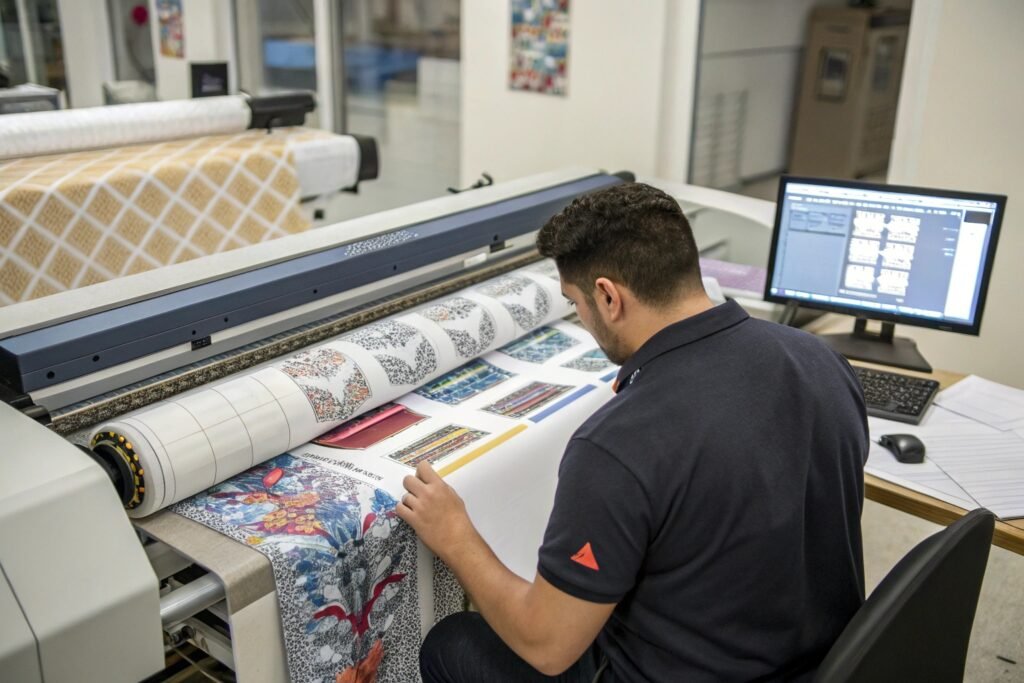
What Steps Are Involved?
- Design File Setup – Vector or high-resolution raster graphics
- Color Calibration – ICC profiles for your specific fabric base
- Transfer Printing – Digital printer lays ink onto transfer paper
- Heat Pressing – 180–210°C under pressure for 30–60 seconds
- Post-Processing – Roll inspection, shrinkage check, and packing
We use Mimaki and Epson printers with calibrated color charts to ensure true Pantone accuracy across repeat orders.
What Are the Print Size and Layout Options?
- Roll-to-roll: Continuous pattern printing for yardage
- Panel printing: Sports jersey or leggings by piece
- Placement print: Specific logos or motifs on designated areas
We help clients simulate print placement with digital mockups to reduce layout issues during cutting or stitching. This is especially useful for complex items like rash guards or fitted sportswear.
What Technical Features Should Performance Fabric Include?
Beyond the print itself, the performance characteristics of the fabric are what make or break the final garment—especially in activewear, swimwear, or team apparel.
The best sublimation fabrics combine printability with features like moisture-wicking, UV protection, anti-bacterial finish, 4-way stretch, and shape retention—even after repeated washing.
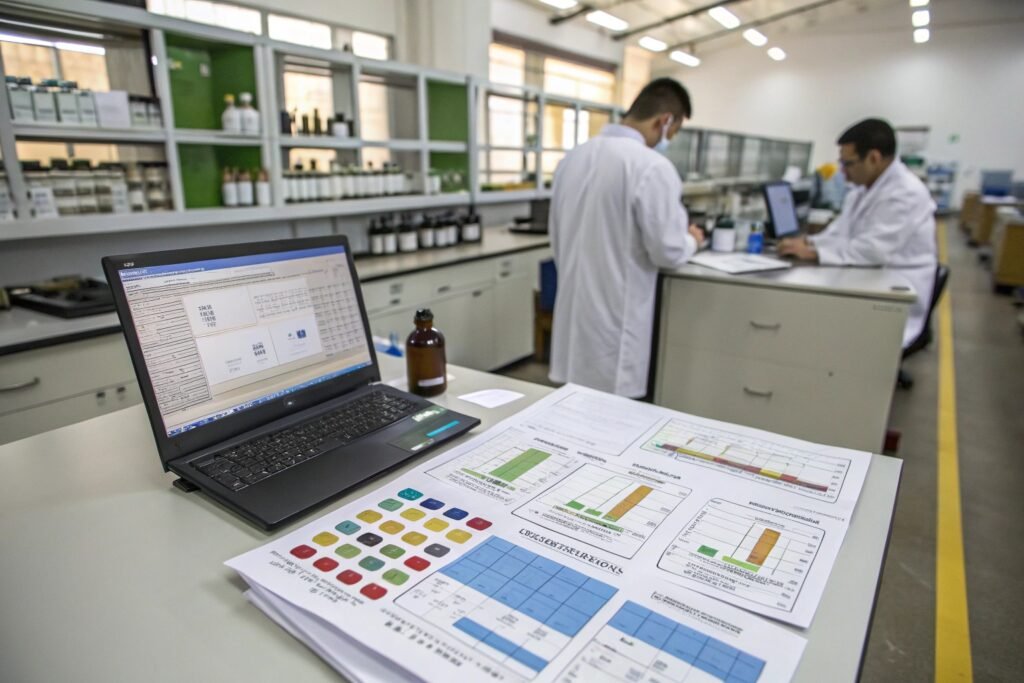
What Are Must-Have Fabric Properties?
- Moisture wicking (AATCC 197)
- Anti-pilling (ISO 12945-2)
- Colorfastness to sweat and wash (AATCC 61, ISO 105)
- 4-way stretch and recovery (ASTM D3107)
- UV protection / UPF 50+ (AATCC 183 or AS/NZS 4399)
We test all functional fabrics in our CNAS-accredited lab, with QR-traceable results. Clients in U.S. and Australia often require UPF 50+ certification before launching beach or surfwear collections.
Are the Finishes Durable After Printing?
Yes—if properly applied. Sublimation works best when applied before finishing, but we offer pre-treated fabrics with permanent anti-bacterial or wicking finishes that survive the print process and 30+ washes.
Our poly-spandex interlock with dual-sided wicking is one of the bestsellers for custom yoga wear and performance tanks.
How to Choose the Right Supplier for Custom Sublimation Fabric?
Finding the right print house or textile mill for sublimation is about more than just a digital printer. You need expertise in fabric prep, lab color management, and production logistics.
Choose a supplier that offers in-house sublimation printing, pre-treated base fabrics, test reports, low MOQ options, and digital communication tools for mockups and approvals.
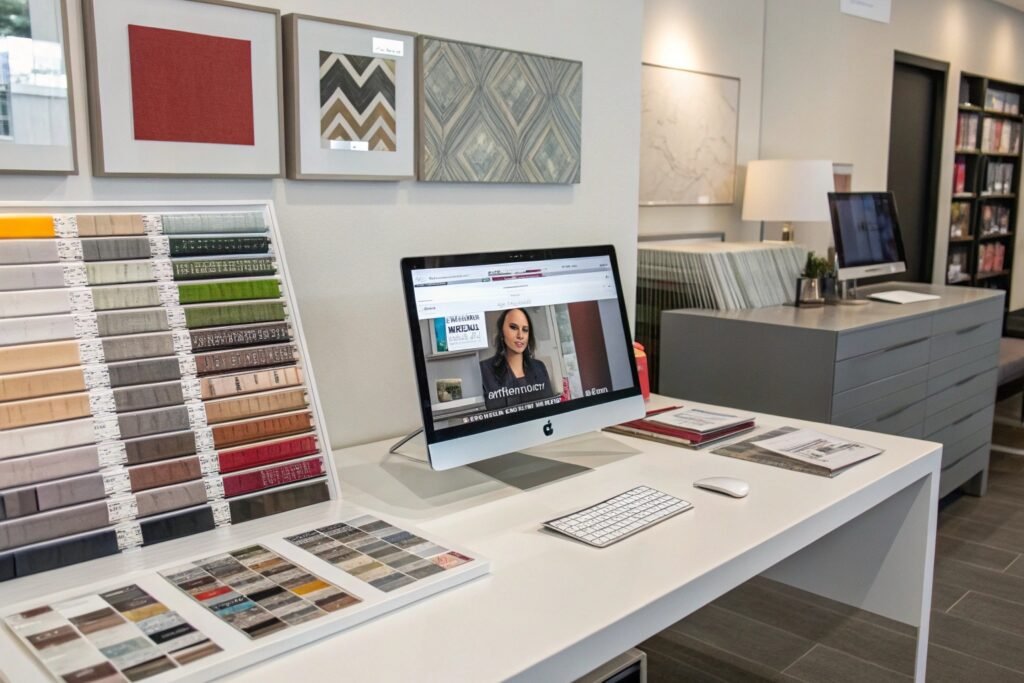
What to Ask a Potential Supplier?
- Do you offer in-house sublimation or outsource it?
- Can you provide strike-off samples with color matching?
- Is your fabric PFP-treated or “sublimation ready”?
- What are your minimums (per design / color)?
- Can you customize GSM, composition, or finish?
At Fumao, we provide free strike-offs for orders over 300m and offer A4 swatches for color approval. For smaller brands, we also support mixed rolls (e.g. 3 designs x 100m) to lower inventory risk.
What Are MOQ and Lead Time Norms?
- MOQ: 300–500 meters per design (or lower with surcharge)
- Strike-off time: 5–7 days
- Production time: 15–20 days after sample approval
- Shipping: FOB China or DDP U.S./EU on request
We also support re-orders with guaranteed color consistency using our cloud-synced ICC and recipe archive—essential for building seasonal lines with repeat customers.
Conclusion
Custom sublimation printed performance fabric is where design meets durability. Whether you're creating bold jerseys, functional yoga wear, or branded swimwear, sourcing the right polyester base, printer, and finish combination is the key to success.
At Fumao Fabric, we offer roll-to-roll and panel sublimation on tested polyester-spandex blends with wicking, stretch, and UV protection—ready for your next collection. From startup brands to established labels, our process ensures your graphics stay vibrant, and your performance stays high.
